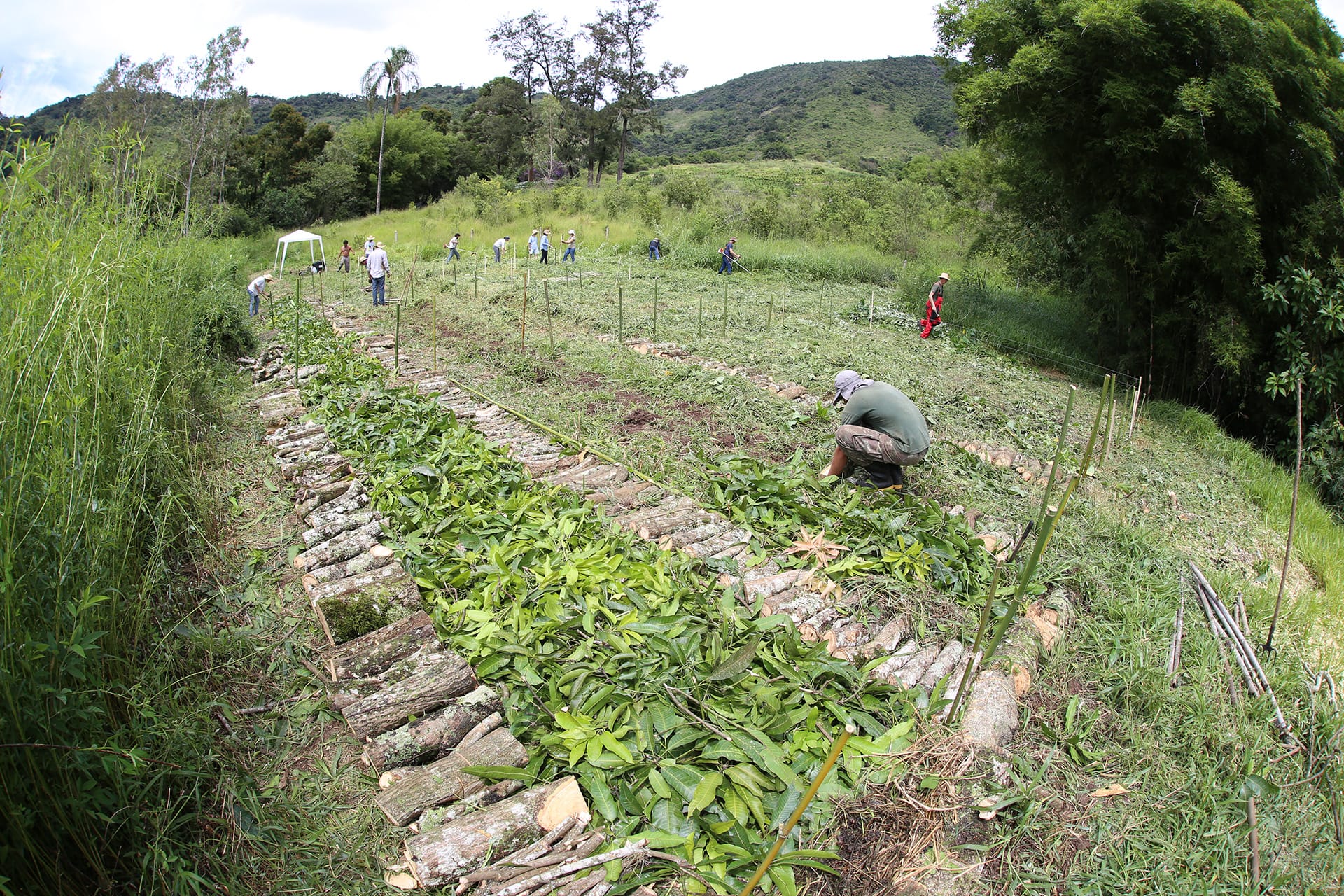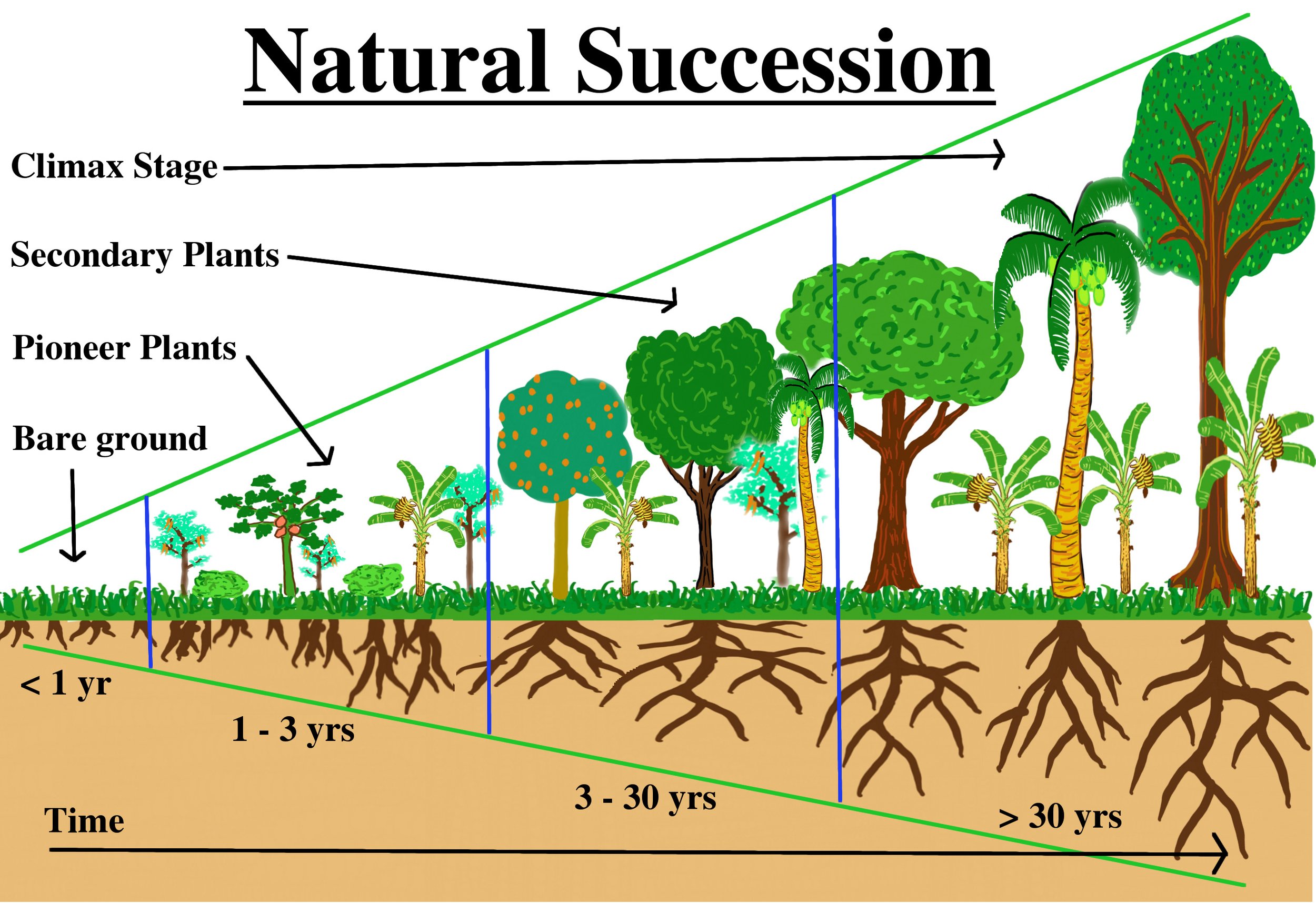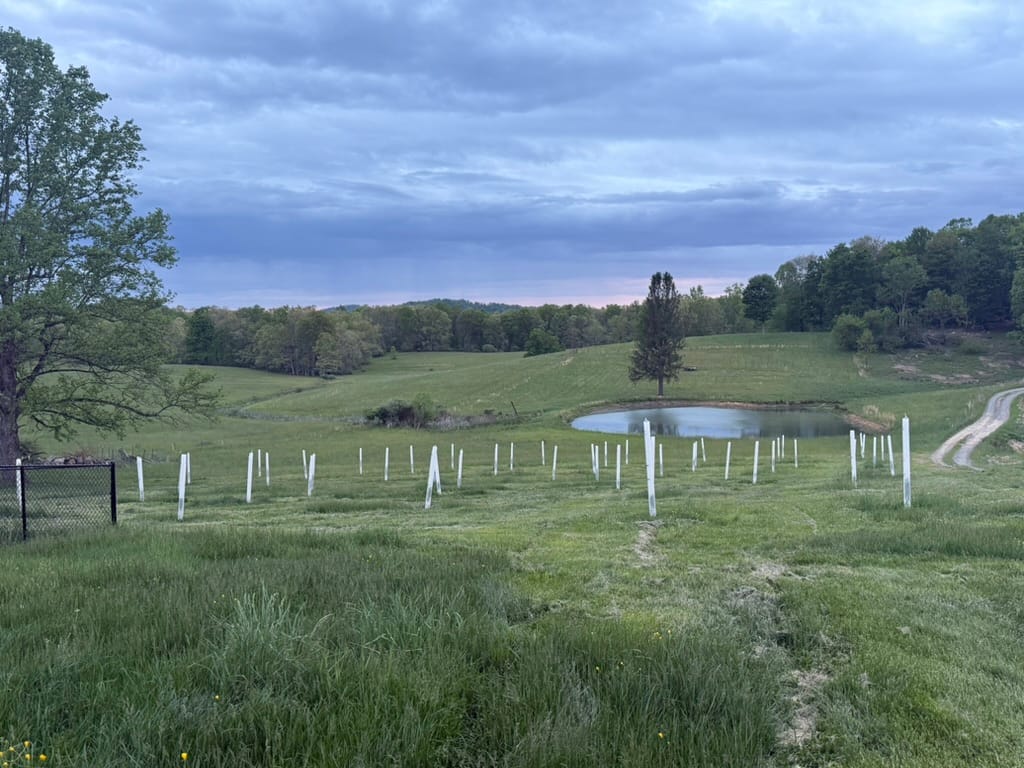Bumbling Through Regenerative Farming: Exploring Syntropic, Permaculture, and Korean Natural Farming

At Goldberry Grove, my regenerative orchard in the heart of the Appalachian Mountains, we’ve adopted a unique approach to farming—one that draws on the strengths of Syntropic farming, permaculture, and Korean Natural Farming (KNF). These three methodologies, each with its roots in ecological balance and sustainability, have created the perfect synergy for growing not just food, but a thriving, interconnected ecosystem.
This blending of techniques is inspired by my commitment to building resilience into every aspect of our farm, from the soil beneath our feet to the trees we plant, and even the community we serve. It’s about finding harmony with nature, respecting its wisdom, and experimenting to see how traditional practices can meet modern challenges.
The Foundation: Syntropic, Permaculture, and KNF
To understand how I integrate Syntropic farming, permaculture, and KNF, we must first look at the core philosophies behind each practice.
Syntropic Farming emphasizes the power of natural ecosystems to regenerate themselves. It’s a holistic approach that mimics the succession of natural forests, promoting biodiversity and building soil health through high-density planting, organic matter recycling, and the management of biomass. By layering plants—starting with pioneer species and moving towards a mature, complex system—Syntropic farming nurtures the land’s natural capacity to grow and renew.

Permaculture, on the other hand, is a design philosophy that goes beyond farming techniques. It’s a mindset that looks at how we can design our landscapes to be self-sustaining, with as little external input as possible. The beauty of permaculture lies in its integration of systems, where every part of the farm works together, creating a resilient and productive ecosystem. It emphasizes the importance of understanding and respecting nature’s patterns and rhythms, whether it’s in plant selection, water management, or soil fertility.

Korean Natural Farming (KNF) brings a deeper, more microbial focus to regenerative practices. KNF involves using local resources—plants, microorganisms, and even fermented plant juices—to promote healthy soils and robust plant growth. What makes KNF unique is its emphasis on utilizing the resources right around you, minimizing reliance on external inputs, and working with the microorganisms that naturally occur in your soil to foster growth and resilience.

Together, these three systems form the foundation for how we approach farming at Goldberry Grove. Each one brings a unique perspective, but when combined, they create an ecosystem where soil health, biodiversity, and resilience are the primary goals. The goal isn’t just to produce crops, but to regenerate the land for future generations.
Syntropic Principles on Steep Appalachian Hills
One of the more experimental elements I’m excited to explore at Goldberry Grove is the Syntropic principle of north-to-south planting. Traditionally, many farms use contour planting, especially on steep hillsides, to slow water runoff and reduce erosion. However, Syntropic farming encourages rows to run from north to south, which is designed to maximize sunlight exposure, particularly in the high-latitude regions.
Given the steepness of our hills, I’ve been cautious but curious about experimenting with this technique. My hope is that it will not only help optimize sunlight for our crops but also create aesthetically pleasing planting rows that can be easily navigated for both farming and agrotourism purposes. Our goal is to make the farm not just productive, but a place people want to visit and learn from. Visitors should be able to see how these regenerative systems work in real life, and how the farm’s design contributes to sustainability.
While I’m still in the experimentation phase, I’m already seeing the promise of using syntropic principles to create a more resilient and biodiverse landscape. Each species is being carefully selected for its ability to complement its neighbors, forming a natural, self-sustaining ecosystem. We’re growing a mix of trees, perennials, and annual crops that support one another, creating the layering effect that is central to Syntropic farming.
KNF and Microbial Integration: Truffles and Mushrooms
A key area of focus for us at Goldberry Grove is the integration of microbial life into our regenerative farming practices. This isn’t just about soil health—it’s about creating a thriving network of microorganisms, fungi, and beneficial bacteria that work together to create a healthy ecosystem.
I’ve been particularly interested in exploring Appalachian truffles and mushrooms in collaboration with a local farmer who specializes in this area. Truffles and mushrooms are naturally abundant in forest ecosystems, and they play a critical role in nutrient cycling, soil health, and even disease management.
By introducing mushrooms and truffles into our system, we’re encouraging the growth of mycorrhizal fungi, which can form symbiotic relationships with our trees, improving nutrient uptake and water retention. This fits perfectly within the KNF philosophy, which emphasizes using local and natural resources, including microorganisms, to support the health of your plants and soil.
Through this collaboration, we are experimenting with how truffles and mushrooms can not only contribute to soil health but also generate additional income streams for the farm. They can be harvested for culinary use or as valuable commodities for specialized markets, all while promoting a healthy, thriving ecosystem in the soil.
Weeding Through Pruning: A Practical and Philosophical Approach
At Goldberry Grove, we’re also incorporating the KNF and Syntropic principles of minimizing external inputs. Rather than relying on commercial fertilizers or pesticides, we use the resources we have on-site. Weeds are managed not by pulling them out but by pruning and incorporating them into the soil as biomass. This creates a regenerative cycle that nourishes the land rather than depleting it.
We also use JADAM, a technique from KNF that turns waste materials, like weeds and leftover plant matter, into valuable organic fertilizers. These fertilizers are made by fermenting plant matter with microorganisms that break it down into a form that is immediately usable by plants. This allows us to reduce waste while simultaneously enriching the soil and maintaining high plant health.
Pruning, rather than weeding, allows us to manage the growth of the plants naturally. It’s a method that keeps the soil covered and healthy while ensuring that each plant is thriving and contributing to the overall system’s success.
The Integration of Knowledge: A Learning Process
One of the most exciting things about combining these methodologies is the constant learning process. Regenerative farming is an evolving practice, and there is no one-size-fits-all approach. Every plot of land is different, and as I continue experimenting and refining the techniques, I learn more about the rhythms and needs of the land at Goldberry Grove.
By embracing the principles of Syntropic farming, permaculture, and KNF, we’re not just trying to create a farm—we’re creating a living, breathing ecosystem that will provide food, income, and educational opportunities for years to come. Whether through experimenting with truffles, integrating microbial life, or carefully managing plant layers and biomass, we’re working to build a regenerative future for Goldberry Grove and the broader community.
Avoiding Smaller Alleys: A Consideration for Machinery

One thing I’m not pursuing on this farm, at least not right now, is creating smaller alleys or narrower rows to create even more density of biomass to allow for more precision with tools and machinery. While I recognize that this might allow for more efficient, targeted farming, I’m also trying to keep things simple and practical for my needs. The current layout of Goldberry Grove is designed with the understanding that I’m still using a tractor for many of the larger tasks, and smaller alleys would complicate machinery access.
Instead, I’m focusing on larger, more manageable rows that allow for both tractor access and the integration of regenerative practices like pruning, mulching, and the strategic use of wood chips. The goal is to optimize time without compromising the regenerative principles I’m trying to build into the farm. By not overcomplicating the layout, I can still incorporate the elements I value from Syntropic and KNF—like biomass recycling and mulching—while keeping the workflow as efficient as possible.
At the end of the day, it’s about finding that sweet spot between regenerative principles and the practicalities of farm management. I want to create a farm that is regenerative in every sense but also one that respects the realities of time, labor, and equipment limitations. The balance I’m striking with wood chips, invasive plant management, and farm layout reflects this ongoing process of adaptation and experimentation.
Conclusion
In the end, my approach to farming is about finding balance—between plants, animals, and the land. By combining Syntropic farming, permaculture, and Korean Natural Farming, we’re building a holistic system that works with nature, rather than against it. It’s about regenerating the land, respecting the rhythms of nature, and experimenting with new ways to create a thriving farm that will benefit future generations.
At Goldberry Grove, every tree planted, every mushroom harvested, and every microbial interaction is part of a larger vision of regeneration. We are committed to building a farm that is as resilient and sustainable as the forests that inspire us.

